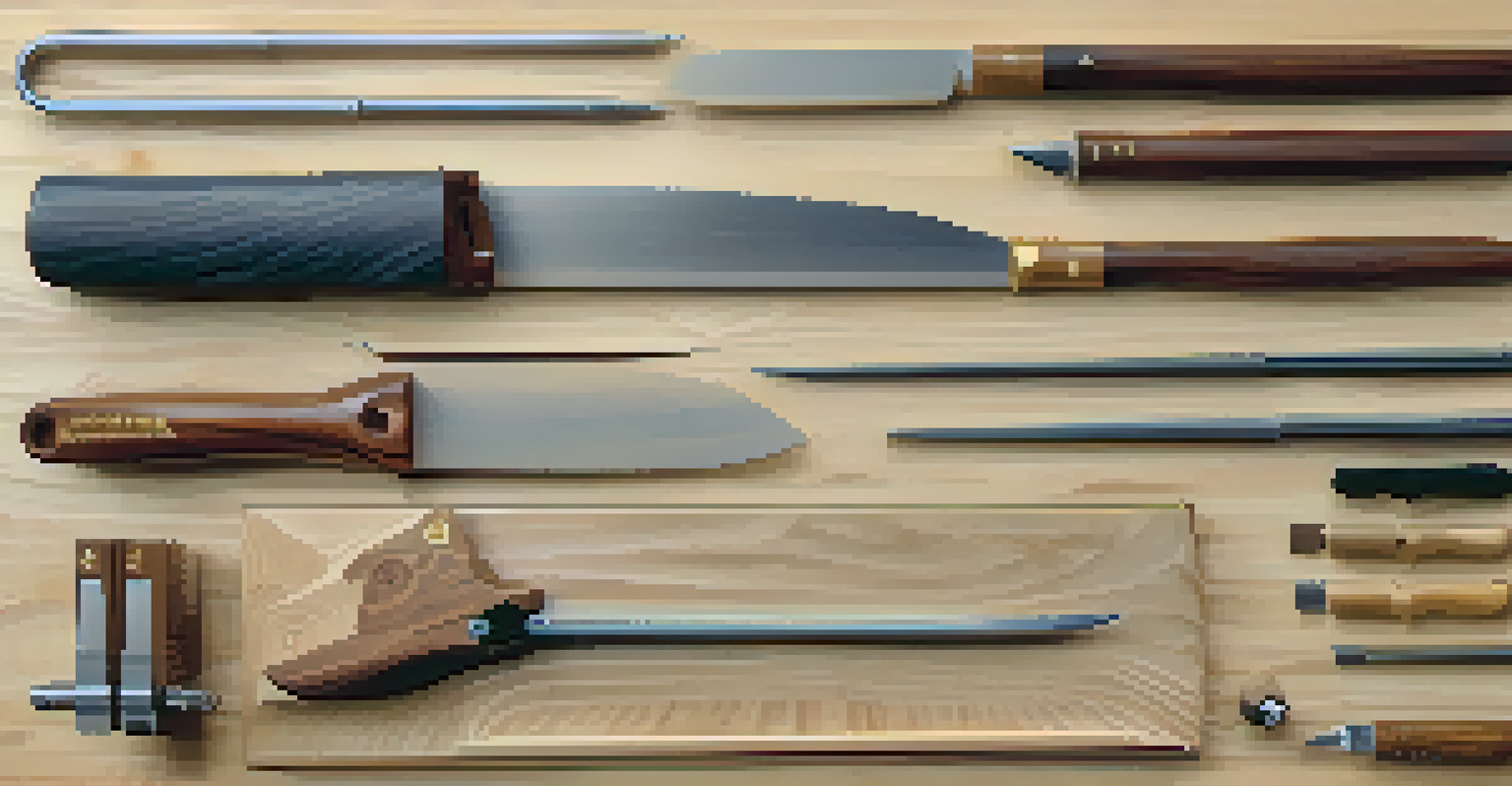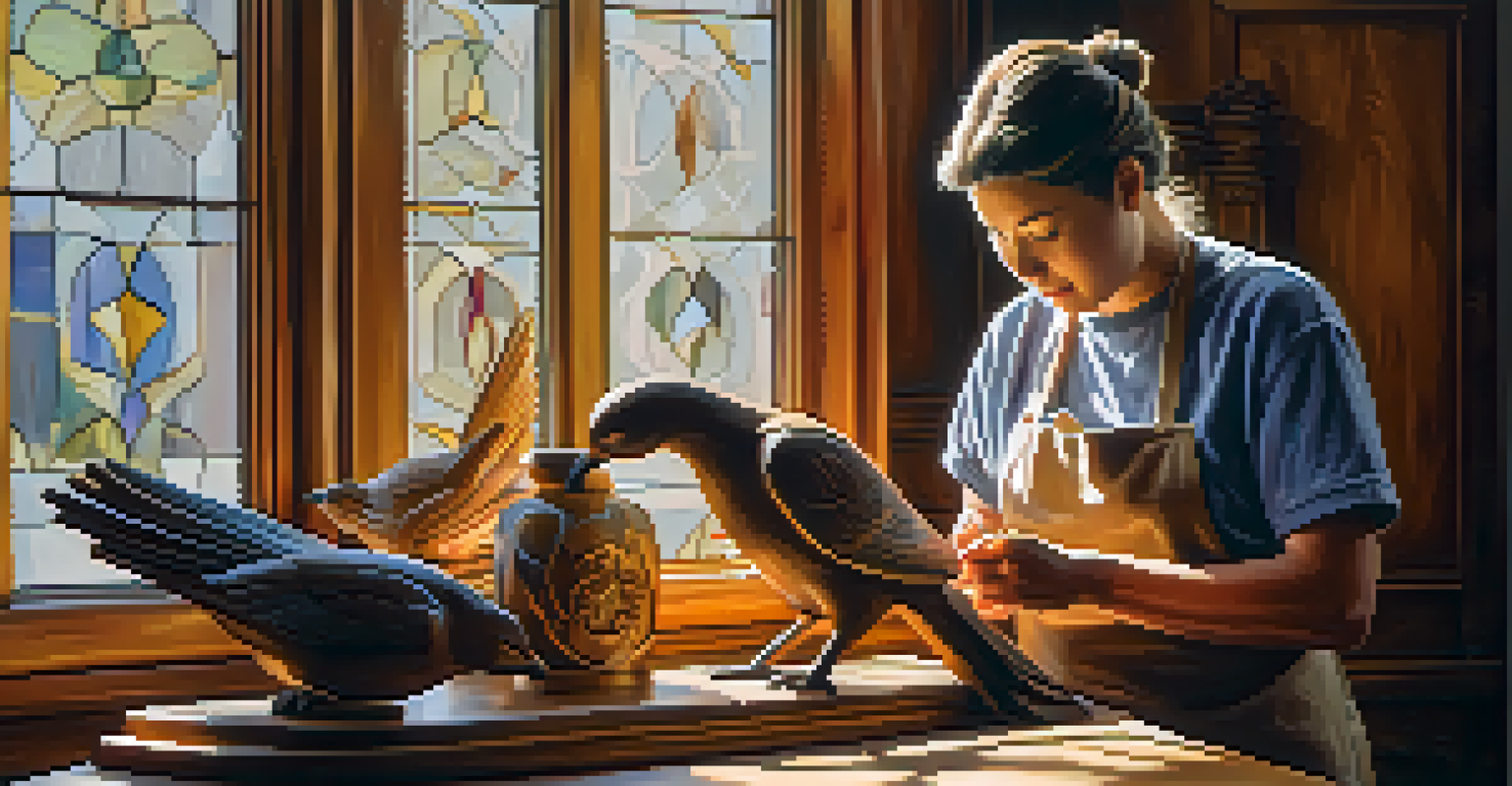Carving with Precision: Techniques for Fine Detail Work

Understanding the Importance of Precision in Carving
Precision is the heart of fine detail work in carving. It’s what transforms a simple piece of wood or stone into a stunning work of art. Without precision, even the most intricate designs can end up looking clumsy or unfinished.
The details are not the details. They make the design.
When you think about precision, consider it as the difference between a rough sketch and a beautifully detailed painting. The attention to minute details can elevate your carving from ordinary to extraordinary, making it essential for achieving professional results.
Ultimately, mastering precision in carving not only enhances the aesthetic appeal of your work but also boosts your confidence as an artist. It allows you to express your creativity in a way that resonates deeply with your audience.
Essential Tools for Fine Detail Carving
The right tools can make all the difference when it comes to precision carving. For fine detail work, you'll want to invest in high-quality chisels, carving knives, and even specialized tools like micro chisels that allow for intricate designs.

Think of these tools as the paintbrushes of the carving world. Just as a painter selects brushes based on the size and detail of their work, a carver should choose tools that suit the level of detail required for their project.
Precision is Key in Carving
Mastering precision transforms simple materials into stunning works of art, enhancing both aesthetics and artist confidence.
Additionally, don’t underestimate the importance of tool maintenance. Keeping your tools sharp and in good condition not only makes the carving process smoother but also ensures that you achieve the desired precision with each cut.
Choosing the Right Material for Detail Work
Material selection plays a crucial role in precision carving. Some woods, like basswood or butternut, are softer and easier to carve, making them ideal for beginners and detailed work. On the other hand, harder woods can be challenging but can yield stunning results.
Art is not what you see, but what you make others see.
Imagine trying to carve a delicate flower from a dense piece of oak versus a pliable piece of pine. The difference in ease and outcome is significant. Softer materials can help you achieve finer details without the risk of breaking your tools or damaging the work.
Ultimately, choosing the right material depends on your project goals and the level of detail you wish to achieve. Experimenting with different materials can also help you discover which one you feel most comfortable working with.
Mastering Basic Carving Techniques for Precision
Before diving into intricate work, it’s essential to master basic carving techniques. Start with simple cuts and gradually progress to more complex patterns. Techniques like relief carving and chip carving are great foundations for fine detail work.
Think of these techniques as building blocks. Just as a strong foundation is required for a tall building, mastering basic techniques will support your journey into more advanced carving. Each technique adds a layer of skill that enhances your overall precision.
Choose the Right Tools and Materials
Investing in quality tools and selecting suitable materials are crucial steps for achieving fine detail in carving.
Practice is key here. The more you carve, the better you’ll understand how to control your tools and make those delicate cuts that bring your designs to life.
Utilizing Patterns and Guides for Accurate Carving
Using patterns and guides can significantly improve your precision in carving. Whether it’s a printed template or a stenciled design, having something to follow helps ensure you stay on track and maintain accurate proportions.
Imagine trying to assemble a puzzle without the picture on the box; it would be challenging to achieve the desired outcome. Patterns act as that guiding image, providing a clear roadmap for your carving process.
Additionally, consider using a lightbox or tracing paper for transferring designs onto your material. This step can save you time and frustration, allowing you to focus more on the actual carving.
The Role of Patience in Fine Detail Carving
Patience is perhaps the most underrated quality in precision carving. Rushing through the process can lead to mistakes that detract from the overall quality of your work. Taking your time allows for careful consideration of each cut.
Think of carving as a journey rather than a race. Each cut and detail adds to the story of your piece, and rushing can lead to a less fulfilling outcome. Embracing patience enables you to appreciate the art form and the growth that comes with it.
Patience Enhances Carving Quality
Taking your time in the carving process allows for careful consideration, leading to better craftsmanship and satisfaction.
Moreover, when you take your time, you're more likely to catch errors before they become permanent. This mindfulness can lead to a higher level of craftsmanship and satisfaction with your finished piece.
Finishing Techniques That Enhance Detailed Carvings
Once your carving is complete, the finishing touches are crucial for showcasing your fine detail work. Techniques like sanding, staining, and sealing can enhance the visual appeal and protect your piece from damage.
Consider finishing as the final polish on a diamond. It’s what makes your hard work shine and stand out. Proper finishing techniques can draw attention to the intricate details you’ve painstakingly carved.

Remember, the right finish can also add texture and depth, enhancing the overall aesthetic of your work. It's worth investing the time to learn and apply these techniques to ensure your carvings are truly remarkable.